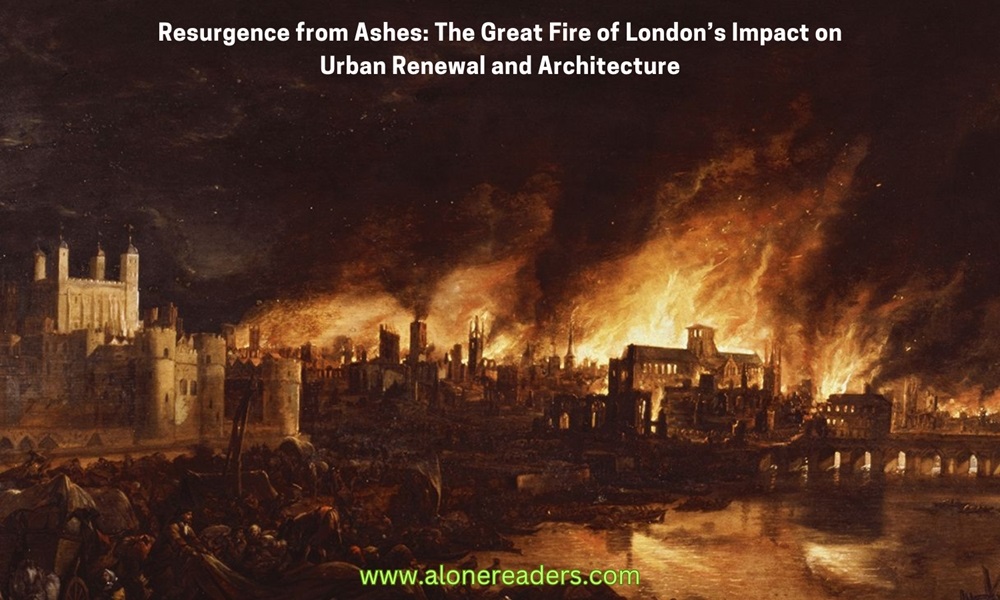
In the early hours of September 2, 1666, a small fire kindled in the bakery of Thomas Farriner on Pudding Lane in London. Little did the city’s residents know that this seemingly insignificant event would escalate into one of the most catastrophic disasters in its history, forever altering the landscape of London.
The Great Fire of London was a monumental event that not only wreaked havoc on the city but also set the stage for its dramatic transformation. The fire, which raged for four days and nights, consumed roughly 80% of the old City of London, including 13,200 houses, 87 parish churches, St. Paul's Cathedral, and numerous other buildings. It is estimated that the fire displaced about 70,000 of the city's 80,000 inhabitants.
The devastation brought about by the fire was unprecedented. London in the 17th century was a crowded, bustling urban center with narrow, winding streets lined with wooden buildings, making it exceptionally vulnerable to fire. The summer of 1666 had been particularly dry, contributing to the rapid spread of the flames. Additionally, firefighting methods at the time were rudimentary and largely ineffective against a fire of such magnitude.
Despite the destruction, the Great Fire also presented an opportunity for renewal and modernization. In the aftermath, London underwent a massive rebuilding project. King Charles II appointed commissioners, including Sir Christopher Wren, to oversee the reconstruction of the city. This marked the beginning of a new era in urban planning and architectural design.
Sir Christopher Wren, a highly esteemed architect and scientist, played a pivotal role in the redesign of London. His vision for the city was ambitious and modern, featuring wider streets, brick and stone buildings instead of wood, and a more organized urban layout. While not all of Wren’s grand plans were realized due to financial constraints and property rights issues, his influence on the new London was undeniable.
One of Wren's most iconic contributions was the design of the new St. Paul’s Cathedral. The magnificent structure, with its impressive dome and elegant Baroque style, became a symbol of London’s resilience and renewal. It stood not only as a place of worship but also as a testament to the city's ability to rise from the ashes.
The reconstruction also led to significant changes in building regulations and fire prevention measures. The Rebuilding Act of 1667 implemented rules that required houses to be built with fire-resistant materials like brick and stone. Streets were made wider to prevent the spread of fire and to facilitate better traffic flow. The aftermath of the fire thus set a precedent for modern urban planning principles and building codes focused on safety and resilience.
The Great Fire also had a profound impact on the socio-economic landscape of London. The displacement of a large portion of the population led to a redistribution of people and trades. Some historians suggest that the fire indirectly contributed to the end of the bubonic plague, as the destruction of rat-infested slums halted the spread of the disease.
Furthermore, the fire fostered a spirit of community and cooperation among Londoners. The shared experience of loss and rebuilding brought people together, transcending social and economic divides. This sense of unity was instrumental in the city’s recovery and growth in the subsequent years.
In a broader historical context, the Great Fire of London and its aftermath represent a significant chapter in the story of urban development. It highlights the dynamic relationship between disaster and renewal, destruction and innovation. The fire's legacy is not only in the physical landscape of London but also in the resilient spirit of its people and the progressive ideas in urban planning and architecture that emerged from the tragedy.